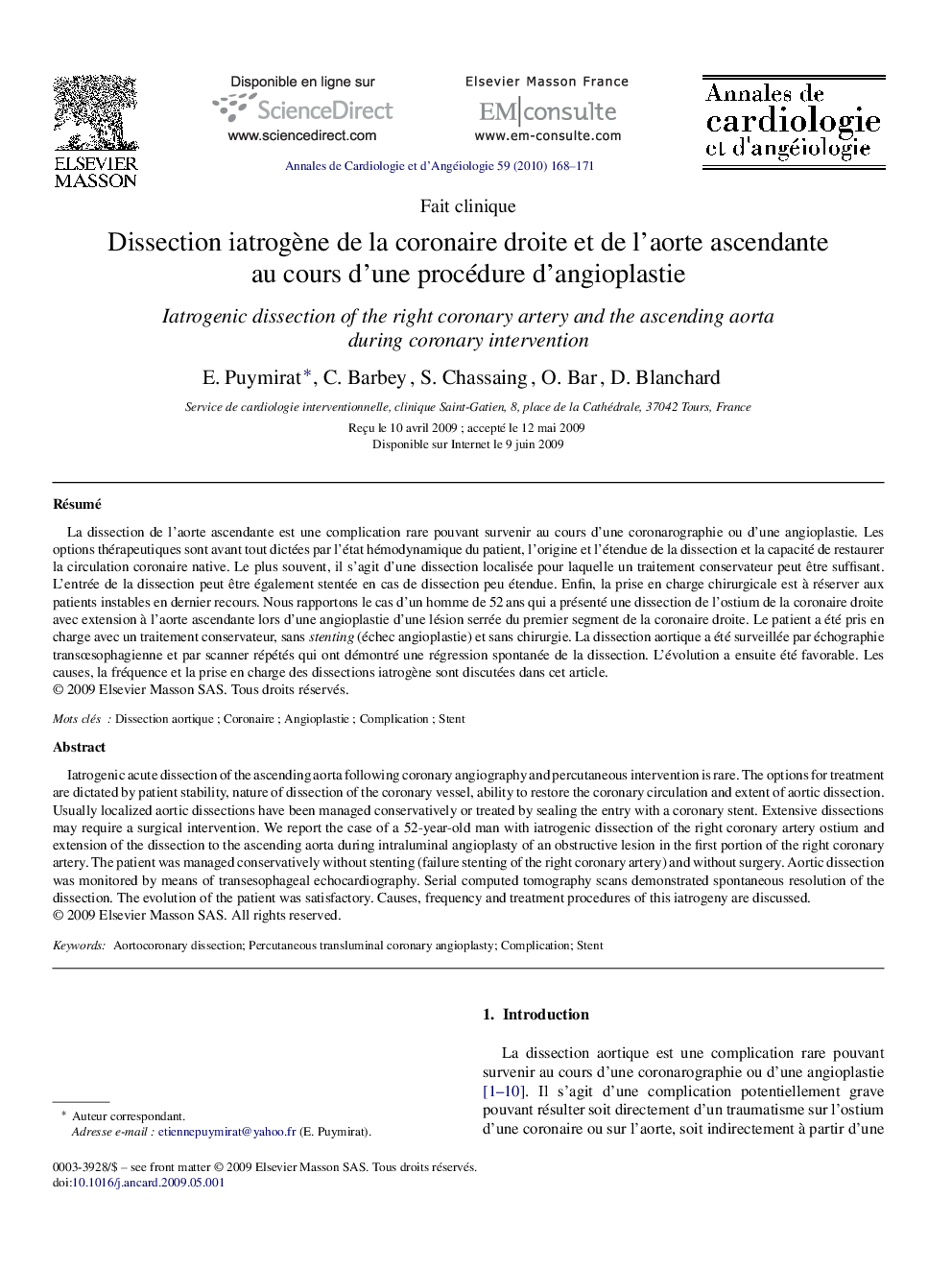| Article ID | Journal | Published Year | Pages | File Type |
|---|---|---|---|---|
| 2869330 | Annales de Cardiologie et d'Angéiologie | 2010 | 4 Pages |
RésuméLa dissection de l’aorte ascendante est une complication rare pouvant survenir au cours d’une coronarographie ou d’une angioplastie. Les options thérapeutiques sont avant tout dictées par l’état hémodynamique du patient, l’origine et l’étendue de la dissection et la capacité de restaurer la circulation coronaire native. Le plus souvent, il s’agit d’une dissection localisée pour laquelle un traitement conservateur peut être suffisant. L’entrée de la dissection peut être également stentée en cas de dissection peu étendue. Enfin, la prise en charge chirurgicale est à réserver aux patients instables en dernier recours. Nous rapportons le cas d’un homme de 52 ans qui a présenté une dissection de l’ostium de la coronaire droite avec extension à l’aorte ascendante lors d’une angioplastie d’une lésion serrée du premier segment de la coronaire droite. Le patient a été pris en charge avec un traitement conservateur, sans stenting (échec angioplastie) et sans chirurgie. La dissection aortique a été surveillée par échographie transœsophagienne et par scanner répétés qui ont démontré une régression spontanée de la dissection. L’évolution a ensuite été favorable. Les causes, la fréquence et la prise en charge des dissections iatrogène sont discutées dans cet article.
Iatrogenic acute dissection of the ascending aorta following coronary angiography and percutaneous intervention is rare. The options for treatment are dictated by patient stability, nature of dissection of the coronary vessel, ability to restore the coronary circulation and extent of aortic dissection. Usually localized aortic dissections have been managed conservatively or treated by sealing the entry with a coronary stent. Extensive dissections may require a surgical intervention. We report the case of a 52-year-old man with iatrogenic dissection of the right coronary artery ostium and extension of the dissection to the ascending aorta during intraluminal angioplasty of an obstructive lesion in the first portion of the right coronary artery. The patient was managed conservatively without stenting (failure stenting of the right coronary artery) and without surgery. Aortic dissection was monitored by means of transesophageal echocardiography. Serial computed tomography scans demonstrated spontaneous resolution of the dissection. The evolution of the patient was satisfactory. Causes, frequency and treatment procedures of this iatrogeny are discussed.
